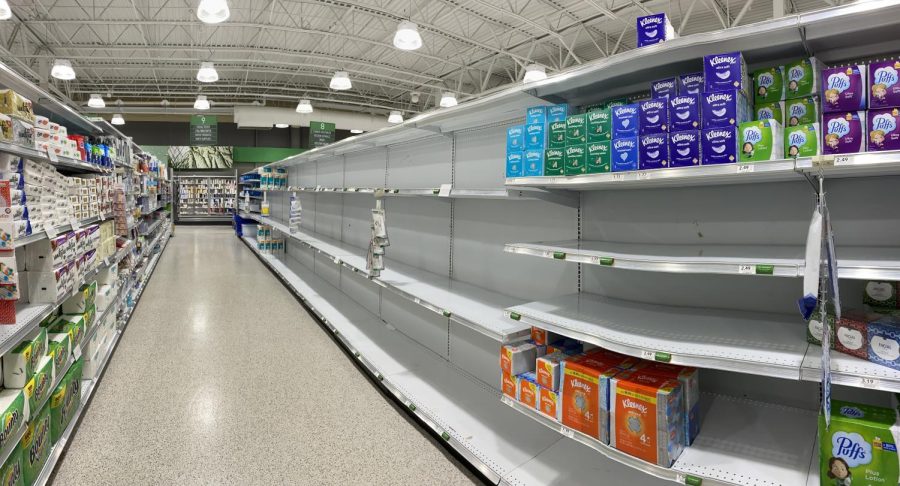Empty shelves limit household purchases
As businesses struggle to swiftly supply common necessities such as milk, bread, meat and cleaning supplies, grocery store shelves throughout America remain bare. After two years of pandemic and supply chain related dilemmas, they still face major setbacks, limiting access to goods for a countless number of Americans.
January 20, 2022
A combination of labor shortages, shipping costs, and cold weather have left grocery store shelves across the country bare. Due to the trauma, the barren shelves invoke, highlighting the beginning of the COVID-19 pandemic’s beginning in 2020, most consumers feel perplexed and frustrated by the current shortage of items in stores. Constraints at grocery stores nationwide continue to worsen as omicron spreads and winter storms add to supply chain woes and manpower shortages. Prevalent across the United States, these shortages mainly affect produce and meat as well as packaged staples like cereal.
As the COVID-19 pandemic enters its second year, more commodities become limited due to global supply chain disruptions such as port congestion and truck driver and service worker shortages. Unfortunately, a multitude of people lost their jobs due to the COVID-19 pandemic and never got their jobs back. Several metro Atlanta grocery stores like Publix and Kroger have run out of necessities like milk, meats, and bread, and employees continuously have trouble refilling shelves. Because cheaper food sells out faster, it puts low-income individuals at a disadvantage, as expensive foods remain. The constant empty shelves in the store affect an individual’s intake of food, as well as their general lifestyle.
“My son wanted a specific pasta dish with chicken and we had no chicken at home so that’s one of the things I went to go get and there was absolutely no chicken or at least chicken breasts which I wanted to use. I had to completely switch gears and find something else to eat so it was a little frustrating, but we just have to be flexible right now and you can’t really have a rigid menu at your house,” language teacher Mindy Cotton said.
In addition to COVID-19, weather-related occurrences, ranging from snowstorms in the Northeast to wildfires in Colorado, have also disrupted goods availability and prompted some buyers to stockpile more than usual, increasing the pandemic’s supply challenges. According to Consumer Brands Association President and CEO Geoff Freeman, 5 percent to 10% of items in U.S. supermarkets will run out of supply at any given time.
“The shortage has gotten worse since right after Christmas and since so many many customers bought out the shelves this past weekend because of the snow. There are a lot of grumpy customers that I interact with asking ‘Do you guys have this in stock?’. However my paycheck has stayed the same since the shortage”, magnet junior and Publix employee Isaiah Grissom said.
Fortunately, hope remains for the remainder of 2022 as employment rates return to the state they were pre-pandemic, assuming the occurrence of new variants do not take place. Although labor will not likely return in full force, this economic burden should not continue to negatively affect the lives of Americans.






